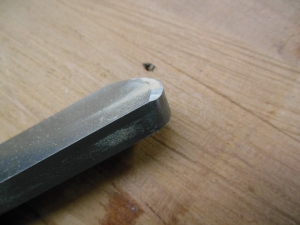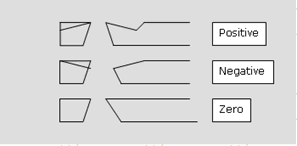You are using an out of date browser. It may not display this or other websites correctly.
You should upgrade or use an alternative browser.
You should upgrade or use an alternative browser.
What is a negative scraper?
- Thread starter ghansen4
- Start date
Signed-In Members Don't See This Ad
Signed-In Members Don't See This Ad
mark james
IAP Collection, Curator
Hope this helps. Also Stuart Batty makes some mighty fine, and mighty expensive versions! I saw him do a demo - very impressive!
http://www.cindydrozda.com/handouts_Pdfs/handouts/demo handouts/negative rake scrapers.pdf
http://www.cindydrozda.com/handouts_Pdfs/handouts/demo handouts/negative rake scrapers.pdf
This article would be a lot better if it had even one diagram.
Does anyone have a diagram they could post to clarify the words, please ?
Does anyone have a diagram they could post to clarify the words, please ?
Hope this helps. Also Stuart Batty makes some mighty fine, and mighty expensive versions! I saw him do a demo - very impressive!
http://www.cindydrozda.com/handouts_Pdfs/handouts/demo%20handouts/negative%20rake%20scrapers.pdf
Charlie_W
Member
Note that using a Skew "Like a negative rake scraper" is not the same as actually using a negative rake scraper. Most skews are ground to a totally different angle and also a Skew would not have a burr.
A scraper or a negative rake scraper will have a burr raised on the cutting edge which will do a splendid job...a burr will be worn away quickly and need to be refreshed to continue cutting.
A scraper or a negative rake scraper will have a burr raised on the cutting edge which will do a splendid job...a burr will be worn away quickly and need to be refreshed to continue cutting.
mark james
IAP Collection, Curator
This article would be a lot better if it had even one diagram.
Does anyone have a diagram they could post to clarify the words, please ?
Hope this helps. Also Stuart Batty makes some mighty fine, and mighty expensive versions! I saw him do a demo - very impressive!
http://www.cindydrozda.com/handouts_Pdfs/handouts/demo%20handouts/negative%20rake%20scrapers.pdf
Some additional info: http://www.woodworkersemporium.com/content/NRS-Instruction-Manual.pdf
NOTE: I do not own one, I have no experience with one, just being helpful! Back to my 3/4" roughing gouge.
Note that using a Skew "Like a negative rake scraper" is not the same as actually using a negative rake scraper.
Charlie's description is more accurate as to what we do. It still leaves a very smooth finish on most woods.
randyrls
Member
This article would be a lot better if it had even one diagram. Does anyone have a diagram they could post to clarify the words, please
This is my negative rake bowl scraper. It is a finishing tool, not used to hog off material. After turning a bowl form to about the correct thickness, this tool is used to remove any tool marks from the inside or outside of a bowl. Present horizontal and on center line OR just above center on inside, just below center on outside. In case of a catch, you want the material to be moving away from the cutting edge.

View in Gallery
It is easy to put a negative rake on a standard bowl scraper. The angle isn't critical. Any angle from 15 to 25 degrees is appropriate. The higher the angle, the less "grabby" the scraper is. Sharpen the scraper upside down to put a burr on the upper edge. Hone top surface for smoother cuts.
Last edited:
wouldentu2?
Member
I would imagine he presents the skew with the heel and toe parallel to the mandrel and use the sharpened edge to remove any uneven ridges from the blank. Thats how I use it right before any sanding. Works great on wood don't do much acrylic.
I would imagine he presents the skew with the heel and toe parallel to the mandrel and use the sharpened edge to remove any uneven ridges from the blank. Thats how I use it right before any sanding. Works great on wood don't do much acrylic.
That is correct with the handle slightly raised and the edge shaving sharp. Not a true negative rake but as Charlie called it like a negative rake. I apologize if my terminology is not correct or I have declared it to be something it is not. . For us it produces an amazingly smooth finish. We do not do hardly any acrylic.
All of our turning is "country grown, trail and error learned ( with a heavy emphasis on the latter. Almost 50 years ago my grand dad spent about thirty minutes showing me what to do at his lathe the rest has been hunt and pick until it works )
Last edited:
leehljp
Member Liaison
Tim, would you mind describing how you do this? I'm still not following how a skew can be used like a negative scraper.
A skew is usually used with the handle down and blade upward and cutting in at an angle. When used as a "scraper", it is laying flat on the tool rest, handle presented level to the blank. Since the skew is beveled on both sides, and presenting the blade flat and level to the blank, the blade end is at a negative angle.
Notice that Randy posted a picture and how the end of the blade is ground slightly downward - the end of the skew, when presented this way, the blade edge is also slightly downward. This is a "negative" angle when presented level to the blank.
BTW, this is not what is commonly referred to as the purpose of a skew. While using the skew as scrapper is OK, it is not what wood turners refer to as the intended use of a skew. Skews were originally intended to "cut" . . . not "scrape". But when used flat as a scraper, the bevel of the end comes in contact at a negative angle, ergo "negative scraper."
Last edited:
BTW, this is not what is commonly referred to as the purpose of a skew. While using the skew as scrapper is OK, it is not what wood turners refer to as the intended use of a skew. Skews were originally intended to "cut" . . . not "scrape".
We do occasionally use the skew the way it was intended as well. [emoji16][emoji16]
I used to be into woodcarving. I went to South America and there were guys there sitting on logs in the mesquito infested jungle using tools made from who knows what. They put out work that I couldn't dream of doing with my Henry Taylors.
I was impressed and thought well what ever works and gets the job done.
Now I do admire people that are blessed to do it the right way. I am just seldom one of them. [emoji19]
Last edited:
dogcatcher
Member
The term has been in the metal lathe world for ages. These are tool bits for a metal lathe as explained in the Machinist's Blog.


